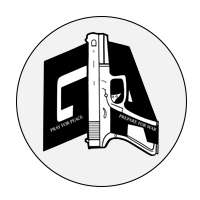Have you ever been in a situation where something goes so wrong, so fast, that you struggle to keep up? Like those times when you stub your toe really hard and the initial pain hits you like a freight train? Well, imagine that, but, instead, involving life-threatening scenarios. Today, we’re chatting about how to recognize and treat shock.
This isn’t the kind of shock you get from an unexpected plot twist in a Netflix series. No, we’re talking about medical shock—a condition so abrupt and severe that it demands immediate action.
What Exactly Is Shock?
Shock is a state where your body isn’t getting enough blood flow. This lack of blood means your organs aren’t getting enough oxygen to function properly. In simpler terms, it’s your body’s way of telling you, “Trouble’s brewing, do something—quick!”
Types of Shock
Different situations can lead to different kinds of shock. Buckle up because here’s a quick rundown:
- Hypovolemic Shock: Caused by severe blood or fluid loss.
- Cardiogenic Shock: Results from the heart not pumping effectively.
- Septic Shock: Triggered by a severe infection.
- Neurogenic Shock: Caused by damage to the nervous system.
- Anaphylactic Shock: A severe allergic reaction.
Common Causes of Shock
You’d be surprised what could lead to shock. Everything from car accidents and severe dehydration to allergic reactions and heart attacks. But recognizing the cause is crucial for proper treatment. Here’s a handy table to make things clear:
| Type of Shock | Common Causes |
|---|---|
| Hypovolemic | Heavy bleeding, dehydration, burns |
| Cardiogenic | Heart failure, heart attack |
| Septic | Severe infection, sepsis |
| Neurogenic | Spinal cord injury, head trauma |
| Anaphylactic | Allergic reaction to food, insect stings, or drugs |
Recognizing the Symptoms of Shock
Recognizing shock can mean the difference between life and death. Here’s what to watch out for:
- Pale, clammy skin: When your skin looks like a ghost on a bad hair day.
- Rapid heartbeat: It feels like your heart is auditioning for the Indy 500.
- Weak pulse: As if your wrist turned into a faint drum solo.
- Rapid breathing: A hastened breath that makes you think you’ve just sprinted a marathon.
- Nausea or vomiting: Your stomach just isn’t having it.
- Confusion: Everything feels a bit off, like watching a trippy indie film.
- Anxiety: That overwhelming sense of “something’s wrong.”
Mental Confusion and Altered States
One of the nastiest parts of shock is how it messes with your brain. Imagine trying to solve a Rubik’s Cube while on a rickety rollercoaster. If someone starts acting oddly or seems disoriented, that’s a huge red flag.

Immediate Steps to Take
Panic never helps. If you suspect someone is going into shock, keep your cool and follow these steps:
- Call 911: Let the professionals handle it.
- Lay the person down: Elevate their legs to help blood flow back to the heart.
- Keep them warm: Use a blanket or your favorite ugly sweater—whatever’s at hand.
- No food or drink: They might choke, or it could worsen the condition.
Positioning
Proper positioning can help manage shock until the experts arrive. Lay the person on their back and elevate their legs about 12 inches if possible. If they’re struggling to breathe, prop their head and shoulders up.
Treating Different Types of Shock
Knowing how to treat each type of shock can make all the difference. Each one requires a unique approach:
Hypovolemic Shock: Stop the Bleeding
For hypovolemic shock, stemming the blood loss is your main priority. Apply pressure on the wound and use bandages if available. Hydration through IV fluids, when possible, is also essential.
Cardiogenic Shock: Support the Heart
In cardiogenic shock, the heart needs support. This usually requires medical intervention, but while waiting, keep the person as calm and comfortable as possible. Avoid physical exertion.
Septic Shock: Fight the Infection
For septic shock, antibiotics and fluids are key. Keep them warm and, if possible, keep track of their vital signs. Clean any visible wounds to reduce the chances of additional infection.
Neurogenic Shock: Stabilize the Person
Neurogenic shock often requires professional medical treatment. Stabilizing the spinal injury and keeping the person calm are crucial steps. Avoid moving them too much to prevent further injury.
Anaphylactic Shock: Use an Epinephrine Injector
Anaphylactic shock requires immediate administration of epinephrine. Injecting them with an EpiPen can save their life. Follow the injection with a call to 911 and keep them calm and lying down.

Preventing Shock
Wouldn’t it be great if we could just avoid shock in the first place? While it’s not always possible, some practices can reduce the risks significantly.
Stay Hydrated
Proper hydration can prevent hypovolemic shock. Carry that reusable water bottle like it’s an extension of your arm.
Medical Training
Basic first aid and CPR training can be lifesavers—literally. Consider taking a course at Green Line Arms. They provide excellent training sessions essential for anyone wanting to be prepared for emergencies.
Allergen Awareness
If you’re prone to allergies, always carry antihistamines or an EpiPen. Make sure people around you know about your allergies and how to help in case you have a reaction.
Regular Medical Check-ups
Regular visits to your healthcare provider can help catch conditions that might lead to cardiogenic or septic shock earlier.
Why Green Line Arms is Your Go-to for First Responder Tips
Why am I suggesting you consider making a pit stop at Green Line Arms for your needs? Well, they’re more than just a gun shop. Their commitment to safety and preparedness isn’t just about arming you; it’s about training you too. The professionals there offer a wealth of knowledge on firearms and first responder techniques.
Address: 1350 South Blue Angel Pkwy, Pensacola, Florida 32506
Phone: 850-285-0468
Website: Green Line Arms
Summing It Up
Shock is a serious condition that requires quick thinking and immediate action. Recognizing the type of shock, understanding the symptoms, and knowing the appropriate steps to take are crucial. Each second counts, and with proper knowledge and tools like those you can gain from Green Line Arms, you’ll be in a much better position to help.
So here’s the final word: stay aware, get trained, and always be prepared. After all, the better equipped you are, the better you can handle the unexpected—be it a stubbed toe or something far more critical.




